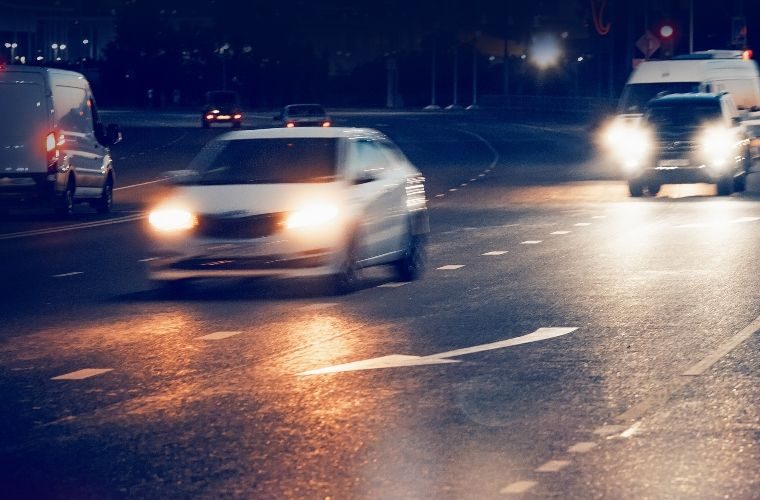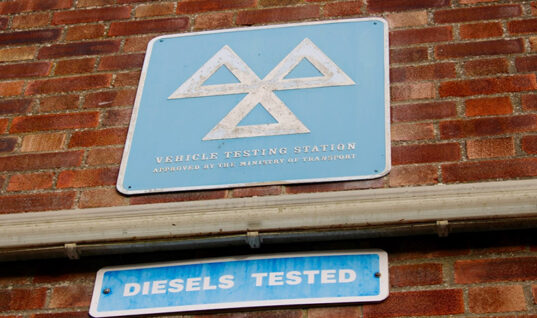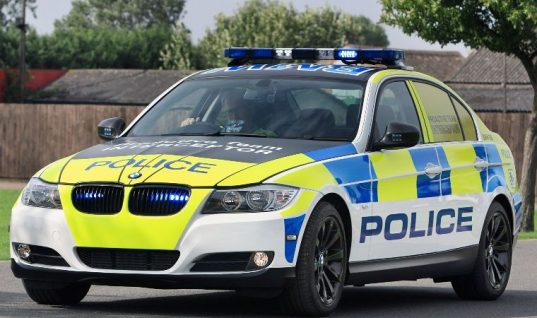Around 90 per cent of drivers think some or most car headlights on the UK’s roads are too bright, with an overwhelming majority of these saying they get dazzled by them while driving, a new RAC study of 2,700 drivers’ views has found.
The problem of glare from headlights appears to be getting worse with 63 per cent of drivers who get dazzled saying it’s happening more often than a year or two ago, with one-in-four (23 per cent) claiming they’re now dazzled a lot more regularly.
And, of all of those who believe headlights are too bright, a huge 64 per cent think they risk causing other drivers to have collisions while two-in-three (67 per cent) say they can’t tell if the headlights of oncoming cars are dipped or on full beam.
Official government data shows that since 2013, there has been an average of 293 accidents a year where dazzling headlights were a contributory factor.
Of these, six were fatal accidents.
Related: Motorists warned of dangerous lighting defects
The actual number may be higher given an investigation may not be able to determine whether or not a collision was directly or indirectly caused by the glare from another vehicle’s headlights.
RAC spokesperson Rod Dennis said: “It’s clear that the problem of drivers being dazzled by the headlights of others isn’t going away, and in fact our research shows that a large proportion of drivers say they’re getting dazzled more regularly now than a year or two ago.
“What’s more, and perhaps surprisingly, it’s younger drivers who are more likely to complain about glare which suggests the matter has little – if anything – to do with an individual’s eyesight.”
Contrary to what might be expected, it’s younger rather than older drivers who are more likely to complain about the apparent brightness of headlights and the effect this has on their driving.
Three-in-10 (30 per cent) of those aged 17-34 think most are too bright, compared to just 19 per cent of those aged 65 and over.
Related: Urgent action needed to renew and modernise UK block exemption, IAAF warns
Meanwhile, of those younger drivers who believe some, if not most, car headlights they see are too bright, 70 per cent think the accident risk is increased – while for drivers aged 65-plus the proportion is 62 per cent.
The brightness of some car headlights even appears to be putting motorists off driving at night.
Sixteen per cent of those who complain about the intensity of headlights say they avoid driving at night altogether, with women (22 per cent) and those aged 65 and over (25 per cent) much more likely to say they deliberately don’t drive after dark than men (9 per cent).
The RAC’s research also asked dazzled drivers to estimate how long it typically takes for them to be able to see clearly again.
While most (65 per cent) said it took between one and five seconds, one-in-10 (12 per cent) said it took upwards of six seconds.
Being unable to see for one second while driving at 60mph means a driver would travel around 13 metres, but being blinded for six seconds would see them covering an enormous 160 metres, which suggests headlight glare could be compromising safety on the roads.
The RAC’s research suggests that the increasing prevalence of vehicles that sit higher on the road, specifically SUVs, might also be exacerbating the problem for those in conventional cars that sit much lower, like hatchbacks, saloons and estates.
Related: Roadside technician killed while recovering broken down vehicle
Six-in-10 drivers (61 per cent) of lower vehicles who said they suffered from glare blamed the headlights on taller vehicles, yet just 28 per cent of drivers of taller vehicles blamed others in similar vehicles.
Motorists’ complaints about the impact some headlights are having on their driving isn’t new, with the RAC first raising the topic in 2018. At the time, the RAC highlighted that the regulations that govern vehicle lighting, including headlights, are decided on at an international (United Nations) level, with input from UK Government.
Nearly four years on, drivers remain overwhelmingly supportive of the matter being looked into with 82 per cent saying they’d like something done to help reduce headlight glare.
Rod added: “There are a number of factors that contribute to whether a headlight dazzles another driver or not, the most important being the angle of the headlights as you look at them.
“If they’re not angled properly – or the driver in the oncoming car has forgotten to dip their headlights – there’s every chance you’re going to get blinded.
“Modern LED headlight technology may also have a part to play as the human eye reacts to the so-called ‘blue light’ from LEDs differently to the ‘yellow light’ of conventional halogen headlights.
“This presents a real irony: the brighter and better your vehicle’s headlights are, the clearer your night-time view of the road ahead is, often it seems at the expense of anyone coming towards you.
“The full intensity of your headlights – especially if they’re not angled down correctly – can cause oncoming drivers to momentarily glance away from the road or even be blinded for a few seconds.
“In short, being dazzled isn’t just about discomfort, it also represents a significant road safety risk.”








Richard
agreed that the head lights are brighter, however if adjusted correctly they should not dazzle.
also on another point the very small area of indicators at the front and rear are sometime a job to pick out, the manufactures tend to go for lights that look smart as opposed to safety issue.
Nigel Duffield
Ref dazzling lights – I am not shocked at all by this – for the last at least 10x years I have noticed this issue – btw my eyes are 20/20 and I do not fortunately suffer any eye conditions – almost every evening/night I have oncoming vehicles dazzling me at some point/position in the road making it difficult to see – I of course train my eyes to the kerb line but sometimes there isn’t one to view and then the situation becomes serious. Having worked for lighting distributors it makes me wonder what checks/processes are in place as I thought have been for years to make sure the regulations are in place to design a compliant headlight – maybe these reguklations have changed? But for sure there is a problem. On another lighting topic I really don’t understand why car manaufacturers are also allowed to desgin i some circumstances ridiculously small rear indicators – for example on the rear of the Tesla 3 – they may well be LED but when the car activates it’s brake light the indicator is not very visible at all. This is not the only example. Still it makes me wonder how the regulations over manufacture are being interpreted and checked.
KEN ASHTON
There are several correctable factors eg dodgy MOT testing , headlamp height adjuster for heavy load in the back not being used , incorrect bulbs , bulbs fitted wrongly . I even had the instance of a lady that didnt know she had a dip switch !!!
Bryn Archer
Its worse for people who wear corrective lenses. My wife cannot drive at night in contact lenses due to the glare, and is barely comfortable wearing glasses. I have also noticed a big difference and I am finding it increasingly uncomfortable and as an ex-recovery driver doing up to 150k a year, I have noticed its getting to be the case in 1 in 5 cars with high intensity lighting, instead of what it was 5 years ago when it was one in 20 or 30. Not sure if its my eyes at 68 or just more cars with it.
Paul Michell
I think there are many misaligned headlamps on newer cars not yet due for an MOT test. Also on these modern headlights the cut off is very sharp so there is no transition, you are either OK or blinded by the light. Older lights had a softer transition as well as not being so bright; brighter light also results in us perceiving deeper shadows due to the contrast. And I agree some of these LED indicators are a waste of space & when will drivers learn to take the foot off the brake when stationary? Winge over!
Ronnie
Badly adjusted headlights was the first thing a Vosa Dvsa man would pull YOU up on have you used your equipment correctly ! and aligned it up correctly . They are never checked on a Pdi either and they have changed the criteria for a failure for the MOT Test aswell